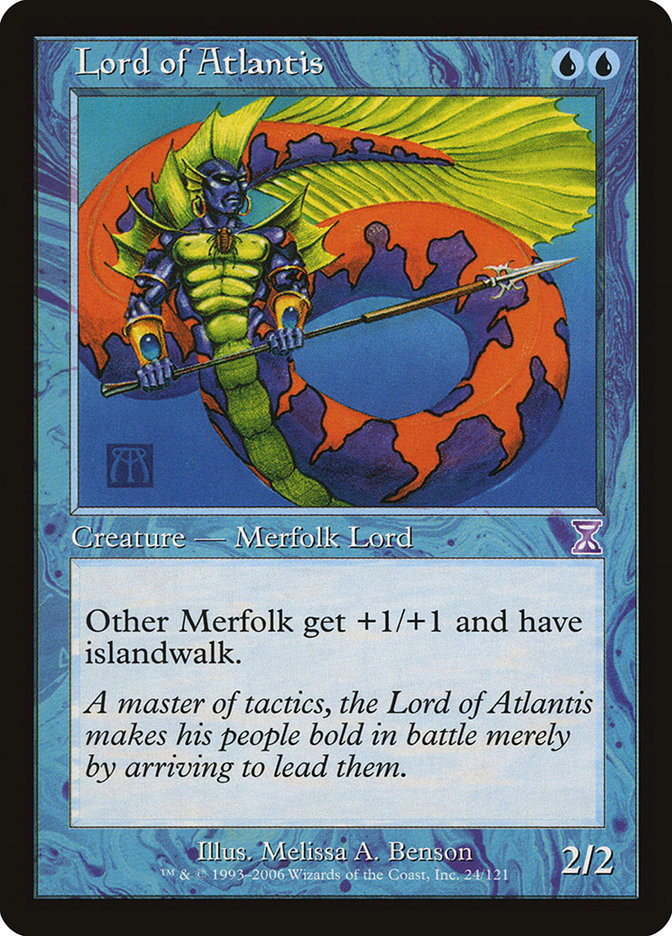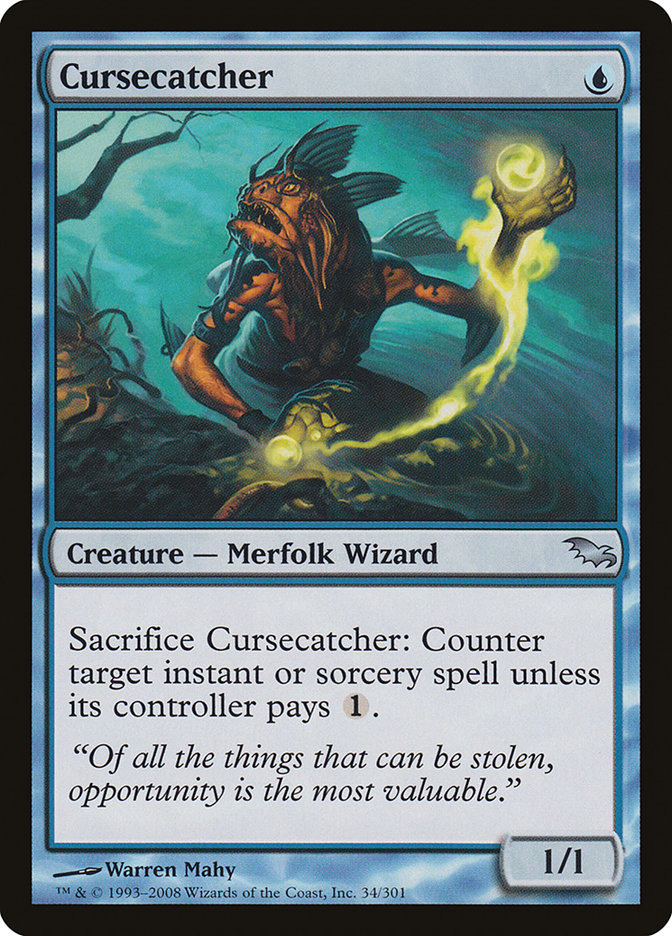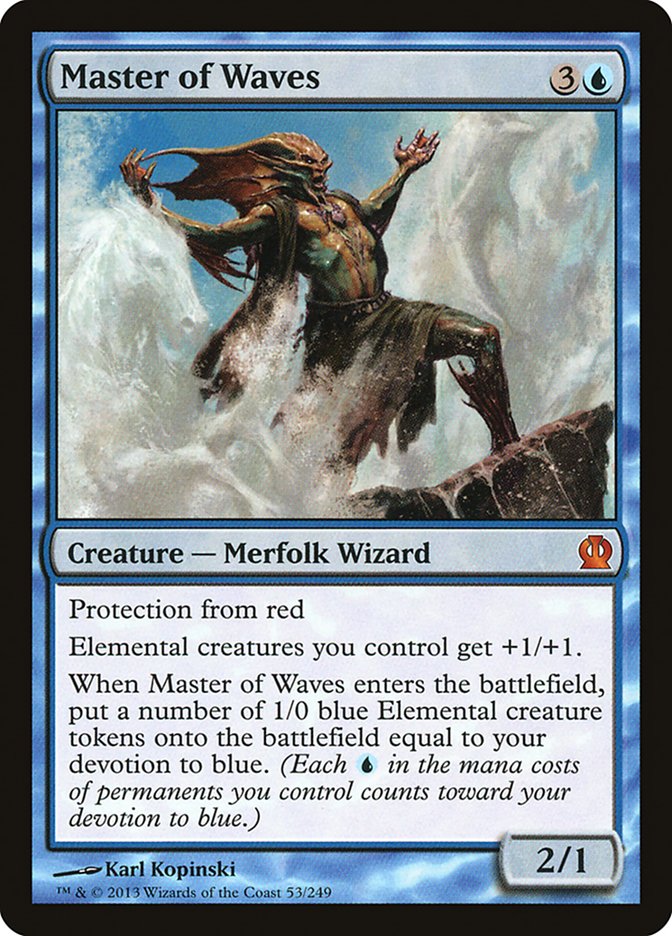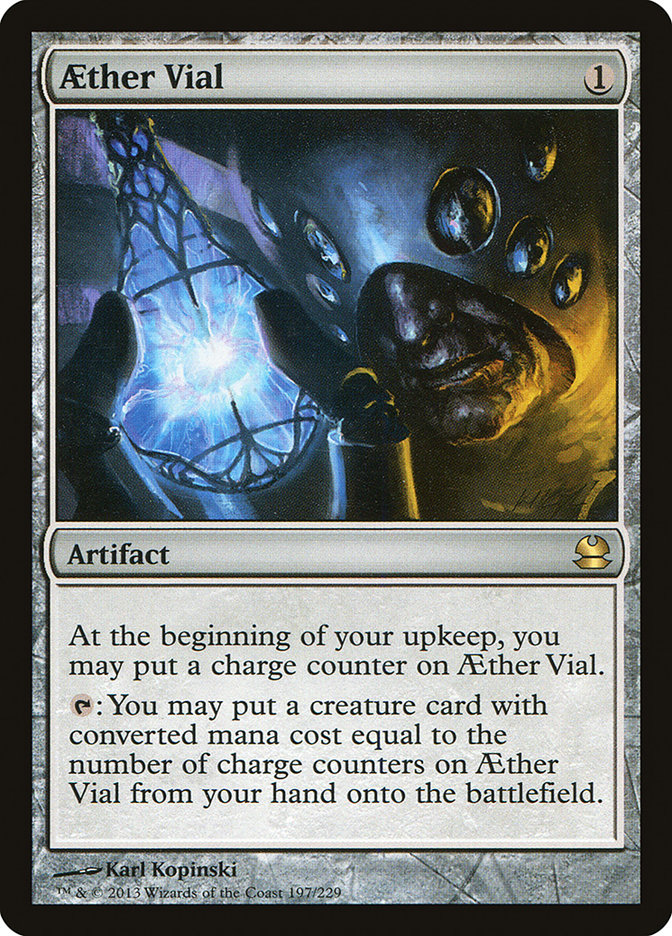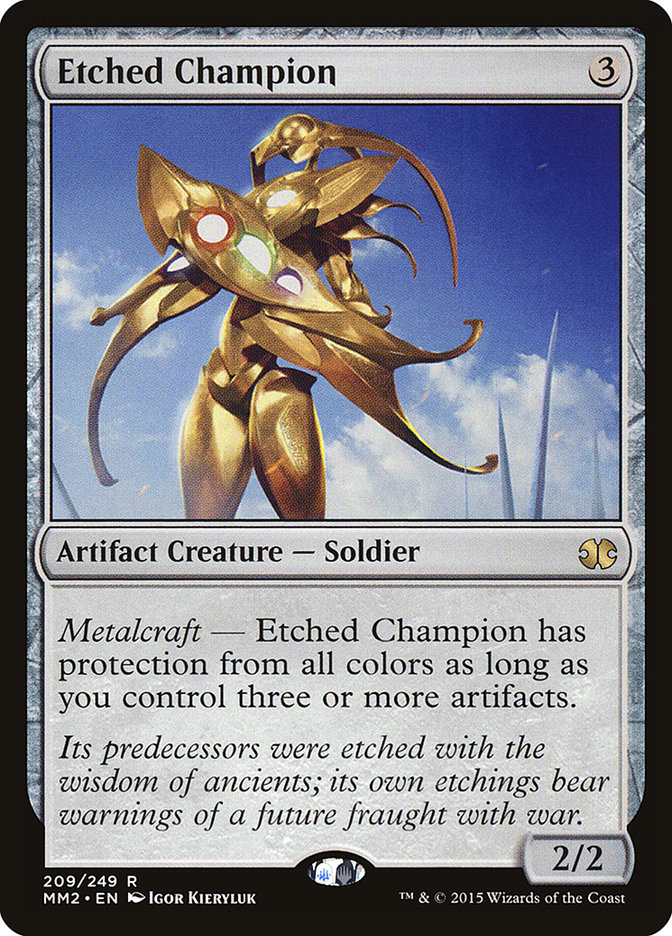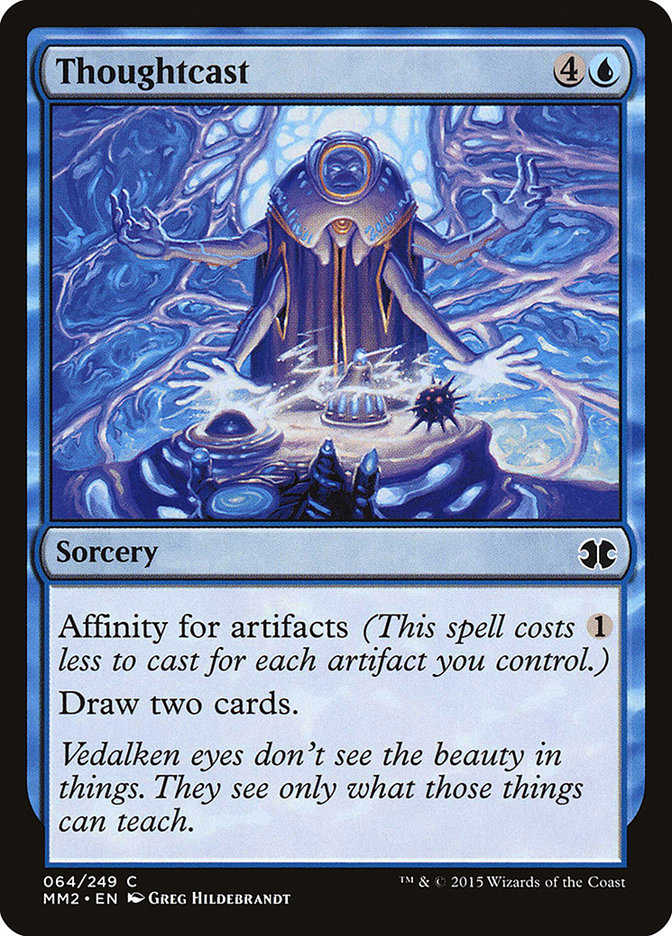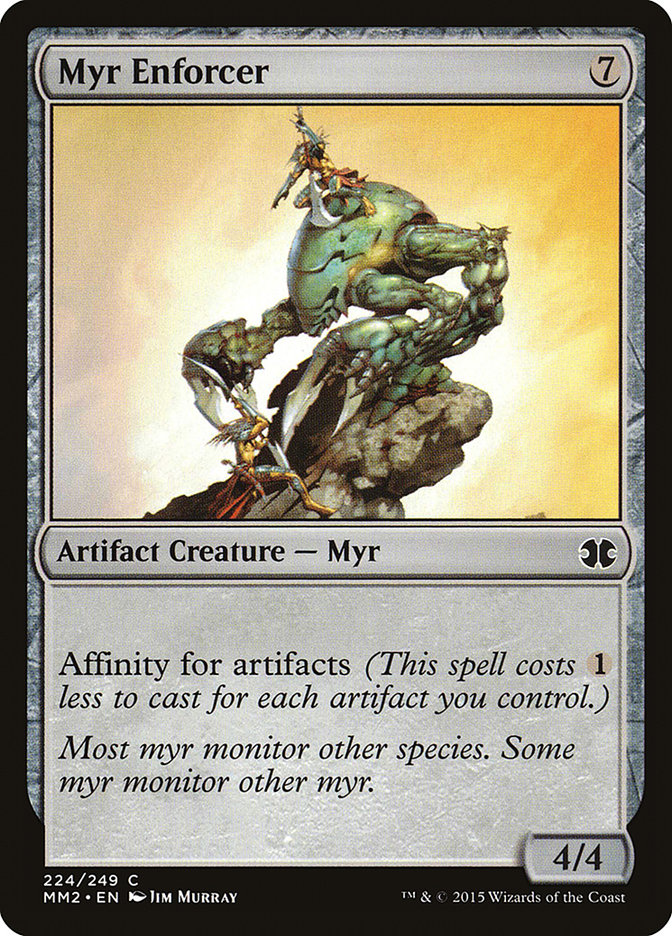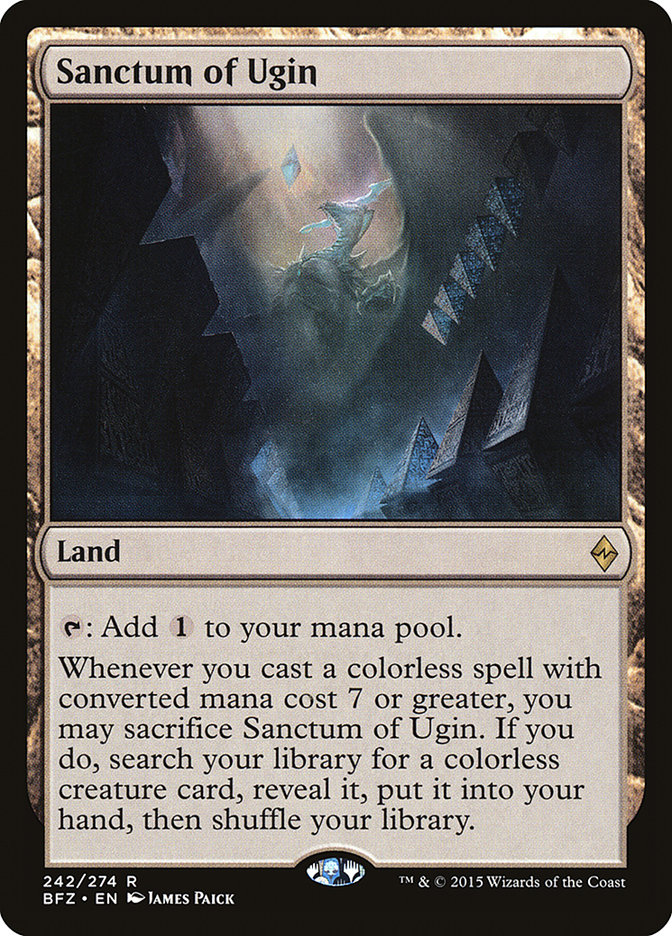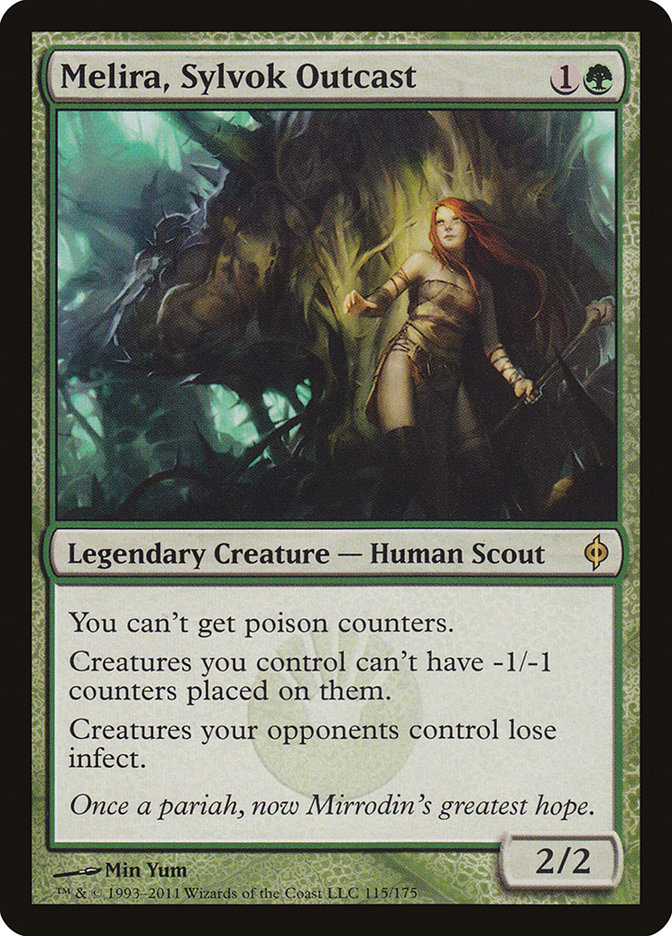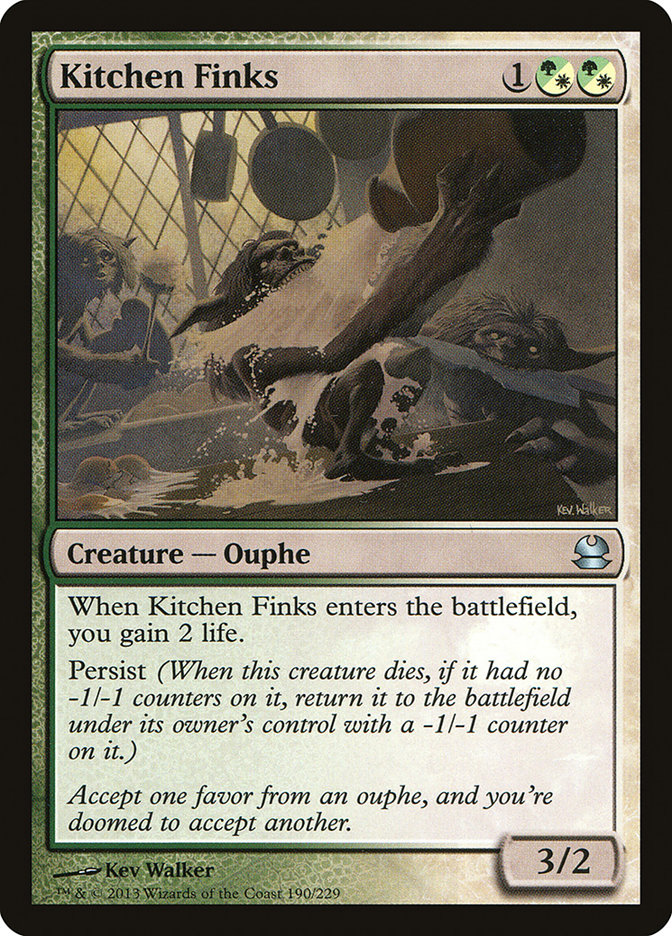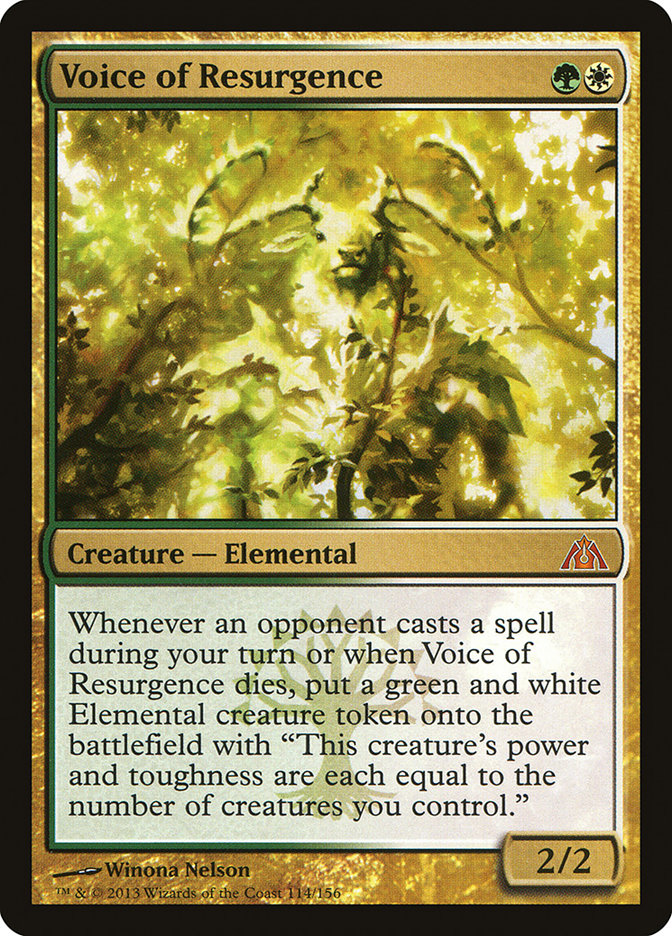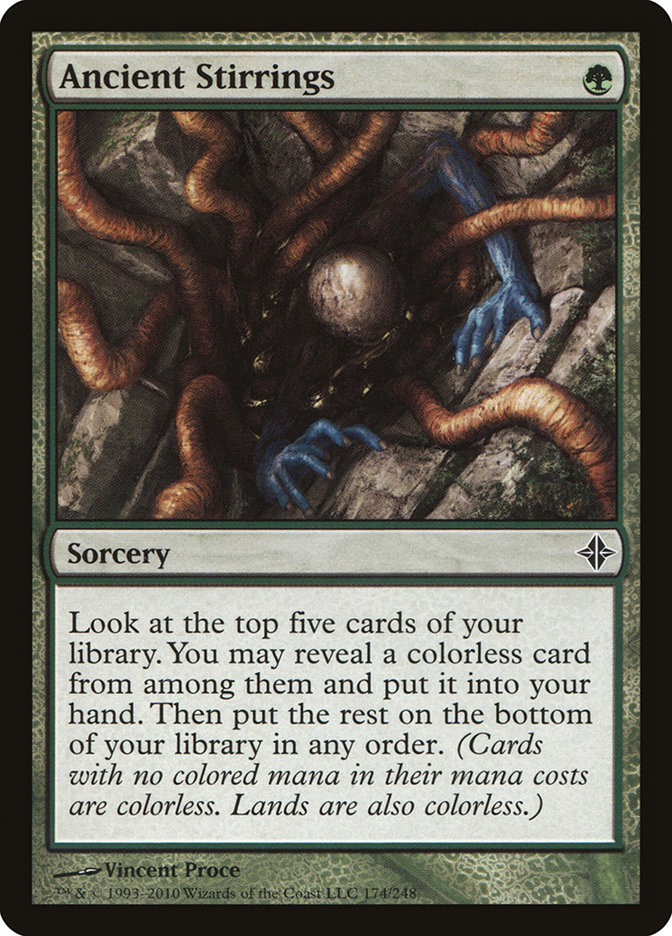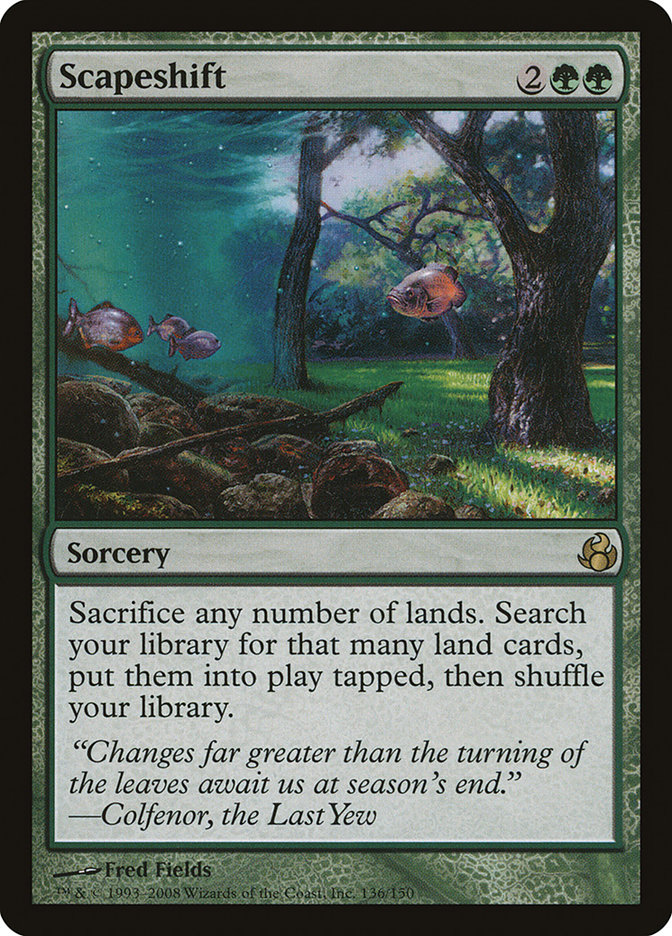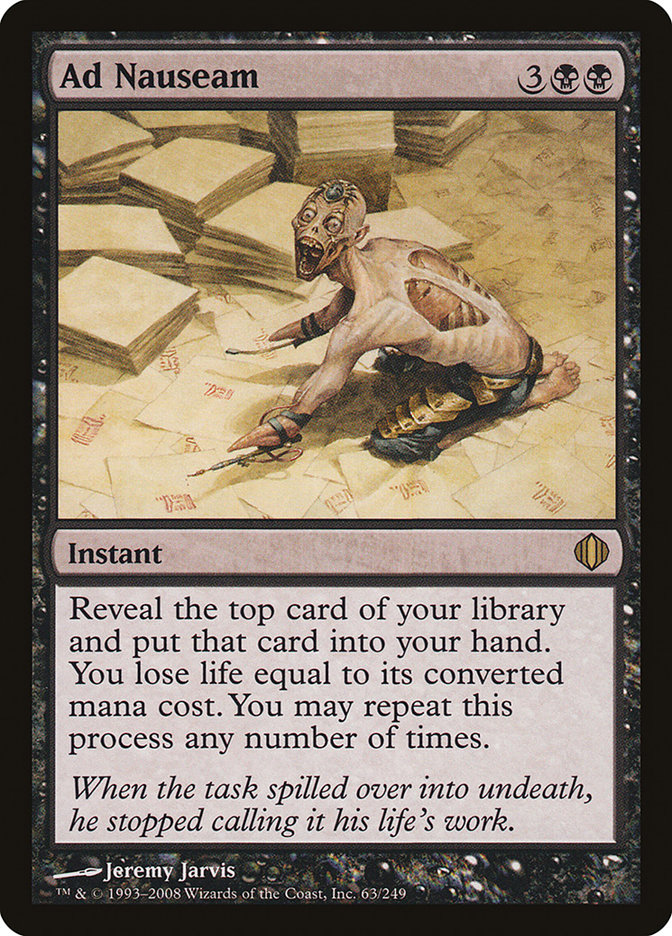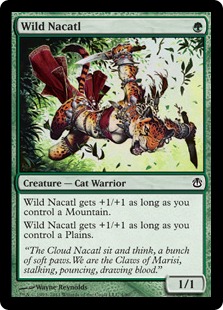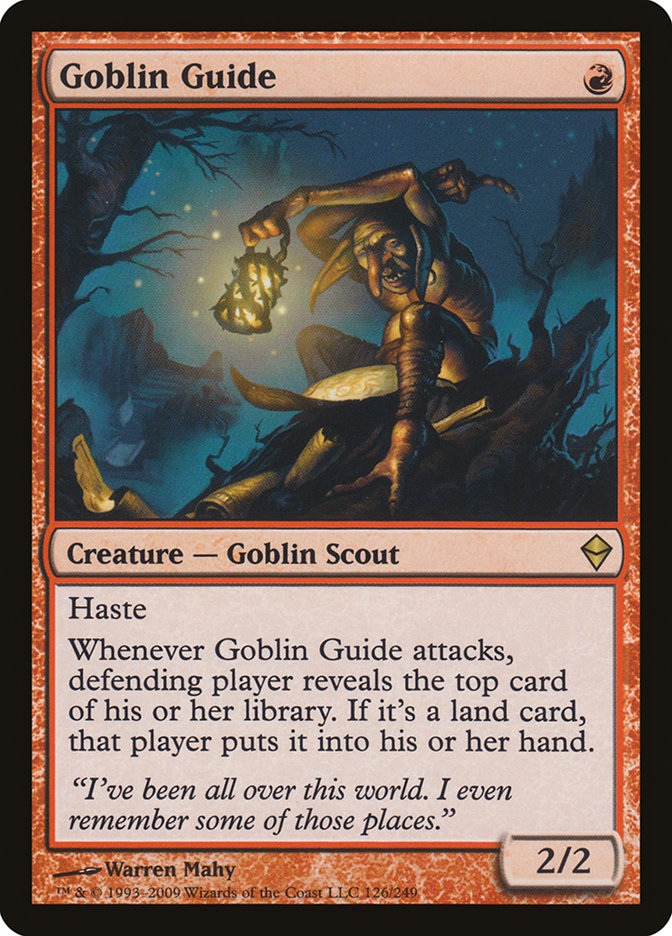Modern is a tough format to crack.
One moment, your deck is on top of the world. You’re getting great matchups, winning most of your matches, and collecting those sweet prizes. Then a new set comes out, or a new deck comes to light, and your strategy is no longer viable. What changed?
With each set come new cards that can shape the entire Modern metagame. One card can bolster an existing archetype or create entirely new ones. We saw a lot of that when Dig Through Time and Treasure Cruise saw print a little while ago. Most cards aren’t nearly as oppressive, but they still lead to some changes that might be tough to see without taking a closer look.
Today, we’re going to go over five Modern decks that have started to fall by the wayside. Two of these decks may surprise you, because it has only been a month or two since they won a major tournament. The others? Well you’ve probably forgotten about them, even though they’ve been a major contender in Modern for years. So let’s talk about these Modern decks, what went so wrong that they faded from the spotlight, and how they could be changed to get back there once again.
The Players
Creatures (30)
- 2 Kira, Great Glass-Spinner
- 4 Lord of Atlantis
- 3 Merrow Reejerey
- 4 Silvergill Adept
- 4 Cursecatcher
- 1 Phantasmal Image
- 4 Master of the Pearl Trident
- 2 Tidebinder Mage
- 4 Master of Waves
- 2 Harbinger of the Tides
Lands (20)
Spells (10)
Sideboard

Merfolk has long been a staple of Modern. Still today, people cling to Merfolk even as it exhales its last dying breath. If you do a quick search on StarCityGames.com for Merfolk in Modern, you’ll see it continue to win Invitational Qualifiers in the hands of a few, but that is nothing compared to the numbers it was generating just over a year ago.
So what changed since then to make Merfolk worse?
For starters, decks like Merfolk tend to go through the ringer whenever there is a big shakeup in Modern. We saw Eldrazi decks run rampant for a few months at the beginning of the year up until the point where Eye of Ugin was banned. In those short months, decks like Merfolk were horribly outclassed. Eldrazi was a big favorite against most other creature-based decks, and Merfolk was no exception. Did Eldrazi push people away from Merfolk, and they just never came back? Or has the format evolved in such a way that they are no longer viable?
Merfolk is a deck that tends to shine when everyone is playing fair. Spreading Seas can slow down some unfair decks that revolve around lands, but mostly it wants to battle stuff like Jund and Grixis. In theory, Merfolk is only as good as Master of Waves. If you don’t have enough time to cast Master of Waves, then that matchup probably isn’t going to be in your favor.
Can we slow this down? Please?
And with a recent uptick in decks like Through the Breach, Death’s Shadow, and even Dredge, Merfolk doesn’t stand much of a chance.
Merfolk flourishes in the same format where Remand is good. Since the banning of Splinter Twin, blue decks have had trouble finding their voice, and cards like Remand, Mana Leak, and Cryptic Command are at an all-time low. Aether Vial and Cavern of Souls nullify many of the blue decks’ main tools for interaction, and a lack of those decks in the format means you’re going to be playing against decks that are more proactive, and likely more powerful. And that is not something Merfolk can really handle.
The good parts of Merfolk still exist. Aether Vial on the first turn, followed by a barrage of creatures coupled with minor disruption, will beat a lot of decks. The true test for Merfolk is whether or not it can keep up with the field if they don ‘t start the game with an Aether Vial. At the moment, I don’t think it can, and that’s why it has fallen out of favor.
Creatures (28)
- 4 Arcbound Ravager
- 4 Ornithopter
- 1 Master of Etherium
- 4 Steel Overseer
- 4 Memnite
- 3 Etched Champion
- 4 Signal Pest
- 4 Vault Skirge
Lands (15)
Spells (17)

Ah, yes. The deck everyone loves to hate, but you can never seem to keep it down for long. This is a strange one to see on the list, I’m sure. But Affinity suffers from a unique problem: when it is popular, people tend to play more hate cards. And those cards, as you probably know, are tough for Affinity to beat.
The sideboard options people have available in Modern as diverse and oppressively powerful. Can you imagine something like Ancient Grudge being legal if it said “destroy target creature?” In actuality, Ancient Grudge is the card that continually pushes Affinity into the ground. But time and time again, we see people start to skimp on the Affinity hate, and it eventually rears its ugly head and wins the tournament. Is this one of those times?
But it hasn’t won a major tournament since full-powered Eldrazi was in Modern. Why is that? Well, when a core strategy takes up around 40% of the field, and your deck is inherently favored against it, your deck is going to over-perform in that tournament. But now that the prey has dwindled in numbers, you aren’t going to be getting a lot of those favorable matchups. Instead, you can expect to see more unfair strategies that are faster than Affinity, as well as fair decks with a full complement of cards that pick Affinity apart.
Affinity is nothing new. It is the most fair-but-still-broken deck in Modern, and everyone knows is. And that’s precisely the problem: people know that they have to come prepared to beat Affinity or they will lose to it. There is a reason that nearly every deck in Modern contains three or more sideboard cards specifically targeted at beating artifact-based decks; historically, if you don’t, you’re going to regret it.
There isn’t a lot that can change about Affinity to make it “better,” though there is likely room to explore. I’ve seen some people working on builds focusing on Myr Enforcer and Sanctum of Ugin. That is a pretty sweet interaction, if you ask me.
But aside from those options, you’ll notice that it seems like every other solid finish from Affinity contains some tension in the Thoughtcast / Galvanic Blast slot. I suppose that figuring out which card is better in a given metagame is the first step to seeing if Affinity can rise from the ashes once again.
Creatures (29)
- 4 Birds of Paradise
- 4 Eternal Witness
- 2 Wall of Roots
- 1 Orzhov Pontiff
- 4 Kitchen Finks
- 1 Murderous Redcap
- 3 Noble Hierarch
- 3 Viscera Seer
- 1 Spellskite
- 2 Melira, Sylvok Outcast
- 1 Scavenging Ooze
- 1 Fiend Hunter
- 2 Anafenza, Kin-Tree Spirit
Lands (20)
Spells (11)

“They never lose with that deck!”
– Cedric Phillips
Whatever happened to Abzan Company? It seemed like Abzan Company was poised to dominate the Modern format in the hands of Brad Carpenter and Logan Mize. I suppose Logan having a newborn baby kept him from attending many events, but even Brad Carpenter made the switch to Infect just a short while ago.
I don’t actually know what happened to push Abzan Company out of the picture. I assume it had something to do with the fall of Splinter Twin, but I could be wrong. Like Merfolk before, decks like Melira Company turn counterspells into cruel jokes. Collected Company and Chord of Calling being swingy, powerful instants puts a lot of pressure on counterspells and often makes them virtually worthless. And Logan wasn’t even playing Voice of Resurgence towards the end!
Maybe it is getting pushed out of the format by decks that are faster and less interactive. Perhaps a rise in numbers of Kalitas, Traitor of Ghet in the fair black decks made it significantly weaker. Or maybe, just maybe, Melira Company is still awesome and we just forgot about it. I’m actually starting to lean toward the latter.
The Dredge matchup is almost a bye. Scapeshift decks have very little interaction and can only compete if they draw Anger of the Gods, and they can’t beat the arbitrarily large life combo. Affinity has been traditionally tough, though you can slant your deck in such a way to give yourself an edge. Four copies of Kitchen Finks will put you in contention to be one of Burn’s toughest matchups. On top of all that, you have two copies of Melira, Sylvok Outcast to buy time against Infect.
I honestly don’t see anything wrong with Melira Company right now. Maybe that means we should be taking another look.
Creatures (25)
- 4 Noble Hierarch
- 1 Spellskite
- 3 Drowner of Hope
- 2 Eldrazi Skyspawner
- 4 Eldrazi Displacer
- 4 Reality Smasher
- 4 Thought-Knot Seer
- 3 Matter Reshaper
Lands (24)
Spells (11)

After Brian Braun-Duin won the World Championship, Bant Eldrazi became the talk of Modern. It had already begun picking up steam before that, but there was a good month or so where I played against Bant Eldrazi in about a quarter of my matches. Very little has changed since then, but I mostly think that Bant Eldrazi was just overhyped. It was proactive and had draws that felt unbeatable, but that’s just about every deck in Modern.
The nature of Modern is that every deck can win. Every deck has cards or interactions that generate enough advantage to overcome just about any other strategy. Bant Eldrazi is no different here, but I think the truth is that it wasn’t consistent. Even Ancient Stirrings wasn’t enough to make up for the Eye of Ugin-sized hole in my heart.
Like Merfolk, Bant Eldrazi is favored against most decks trying to play fair. Your creatures are tough to deal with, and can come out well before the opponent is set up to deal with them. Thought-Knot Seer, in particular, puts a lot of pressure on the opponent to answer it immediately. Otherwise, it’s going to strip your best card and leave you without a lot of options to deal with it. And when that Thought-Knot Seer is immediately followed by a Reality Smasher…well, I’m sure you get the picture.
I was on the Bant Eldrazi train too right before the Modern Open in Orlando just over a month ago. I thought it would be powerful and just consistent enough to get the job done. Instead, I walked away from that tournament feeling like Bant Eldrazi was one of the worst decks I’d ever played with. And why is that? High-variance draws. When you start the game with Noble Hierarch or Eldrazi Temple (or both!), games are going to feel much different than without. Acceleration is the key to making Eldrazi a great deck, and lacking those pieces will leave you with expensive, clunky cards stranded in your hand.
It is rather embarrassing to play against a deck like Affinity and see them dump most of their hand onto the battlefield, only to have you follow with “Temple Garden tapped, your turn.” Modern is explosive and dangerous and exciting. Playing a deck that relies on hitting the right pieces at the right time is dangerous when other linear decks can cast most of their spells by the third turn. You can easily be overwhelmed.
So what’s the fix?
I don’t think there is a way to make Bant Eldrazi competitive again. It has great sideboard options to help in a number of tough matchups, but it isn’t enough. Once people began to understand how inconsistent Bant Eldrazi really was, they all independently came to the same conclusion: just play something else. After all, why would you want to subject yourself to casting Thought-Knot Seer for the foreseeable future?
Creatures (12)
Lands (20)
Spells (28)

Now, I know what you’re thinking. How can Infect be one of the “forgotten” decks in Modern? It’s everywhere! Well, remember earlier when I said that all it takes is a week for your deck to feel outdated? This is one of those times.
I know that Tom Ross and I both made the Top 16 with Infect at the last Modern Open, but I don’t look at Magic like that. I look at the decks I play and try to find out what they feel like, and Infect feels pretty bad right now. I know that may seem strange to hear, but there is definitely something wrong with Infect, and I think I’ve found the answer.
As you probably know, Infect is great against a wide-open field and particularly shines against slower strategies that operate at (mostly) sorcery speed. When Scapeshift, Ad Nauseam, and Tron are big contenders in the metagame, Infect looks like a good choice. It even boasts solid numbers against Affinity, Dredge, and other linear decks without a ton of interaction. So why isn’t Infect good right now?
The short answer is that Infect is starting to look and feel a lot like Affinity. The more people come prepared to beat you, the tougher your matches are going to be. Last weekend, I played against a variety of opponents that brought hate cards like Sudden Shock and Night of Souls’ Betrayal, but that isn’t the reason I lost four times. The reason I lost four times in that tournament was because my deck is inherently disadvantaged against hyper-interactive opponents. Jund, Abzan, Grixis, and Jeskai are all incredibly tough matchups because their removal and disruption are difficult to overcome. When you go into a tournament and can’t beat a fair deck trying to kill your creatures, that isn’t exactly ideal.
The other way that Infect loses is when the opponent is as fast as you are with just the right amount of interaction or just plain faster. Burn and Zoo are both insanely tough for Infect to beat, often leaving you feeling helpless. Infect’s creatures are not designed to block, so any aggressive deck that puts four or more power onto the battlefield by the second turn is going to cause problems. Of course, you can draw Blighted Agent and protection and win the game, but what if they kill your Noble Hierarch and slow you down? What if they have unbeatable sideboard cards like Deflecting Palm? Overload on removal with Path to Exile?
Whenever I play Infect in a tournament, I know that playing against any of these decks is going to be an uphill battle. And unless something changes, I don’t plan on playing Infect again anytime soon.
Curtain Call
The reality is that Modern is full of decks that can be good or bad depending on an outrageous number of factors that are difficult to nail down. And with a metagame as fluid as Modern, with so many players to consider, it can be impossible to get everything right. But that’s what it takes to make it in a format as complex and volatile as Modern.
Right now, there are roughly twenty different decks you can choose from, all of which could potentially win the tournament given the right set of circumstances. That is…ridiculous. Just absolutely ridiculous! But that’s the world we’re living in, and the one that is seemingly the most popular format in Magic.
Each weekend I get to a Modern tournament, there is much to take into consideration, both before and during the event. Every sideboard slot counts, every mistake is amplified due to how powerful each deck is, and every game can be decided by a single draw step. That’s exciting, and I can understand why everyone loves it so much. I know that a lot of people bash Modern because of how crazy it can be sometimes, but that’s just another hurdle of the format. Every format in Magic comes with its own set of difficulties, and Modern’s most humbling is that you can always lose. That’s the nature of the beast.
You just have to learn to accept it and find a different way to approach the problem.


